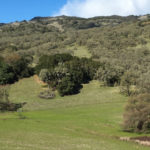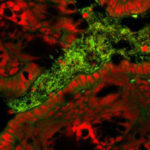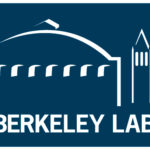Researchers at Berkeley Lab and UC Berkeley have discovered that as plants develop, they craft their root microbiome, favoring microbes that consume very specific metabolites. Their study could help scientists identify ways to enhance the soil microbiome for improved carbon storage and plant productivity.
Microbial Metabolism in Real World Native Biocrusts
Biological soil crusts, or biocrusts, contain communities of microorganisms—including fungi, bacteria, and archaea—that dwell together within the uppermost millimeters of soil in arid lands. These microbes can exist for extended periods in a desiccated, dormant state, becoming metabolically active when it rains. Understanding how biocrust microbial communities adapt to their harsh environments could help shed light on the roles of soil microbes in the global carbon cycle. Berkeley Lab scientists led by Trent Northen’s group in Environmental Genomics and Systems Biology (EGSB) found that specific compounds are transformed by and strongly associated with specific bacteria in native biological soil crust. The researchers reported their findings in a paper published January 2 in Nature Communications.
Biosciences Researcher Helps Map the Microbiome of Everything
The Earth Microbiome Project is a massively collaborative effort to characterize all microbial life on the planet. Representing Berkeley Lab, Eric Dubinsky, a guest scientist working with Gary Andersen in EGSB, as well as Neslihan Tas and Shi Wang in the Climate & Ecosystems Science Division (EESA), were among the more than 300 scientists from 161 institutions worldwide to participate in the project. Dubinsky contributed 124 soil samples and metadata he collected from Hawaii. A meta-analysis of all the microbial community samples collected thus far was published Nov. 1 in Nature. This multi-scale reference database gives global context to DNA sequence data and provides a framework for incorporating data from future studies.
Genes, Early Environment Sculpt the Gut Microbiome
Researchers from Berkeley Lab’s Biological Systems & Engineering (BSE) Division and the Department of Energy’s Pacific Northwest National Laboratory found that genes and early environment play big roles in shaping the gut microbiome. The microbes retained a clear “signature” formed where the mice were first raised, and the characteristics carried over to the next generation. The findings, published on November 28 in the journal Nature Microbiology, could potentially be used to develop designer diets optimized to an individual’s microbiome.
The BSE research team included first author Antoine Snijders, corresponding author Jian-Hua Mao, and Sasha Langley. Read more on the Berkeley Lab News Center.
Biosciences Staff Honored with Director’s Awards
Several Biosciences Area personnel have been named as recipients of 2016 Berkeley Lab Director’s Awards. Yan Liang (Biological Systems & Engineering), Eva Nogales, and William Jagust (Molecular Biophysics & Integrated Bioimaging, MBIB) were honored with individual awards in Early Career, Scientific Achievement, and Societal Impact, respectively. Jill Fuss and Steven Yannone (MBIB) were the recipients of a team award in Technology Transfer for the launch of their company CinderBio. Jim Bristow (Biosciences Area Office, Trent Northen (Environmental Genomics & Systems Biology & Joint Genome Institute, JGI), and Susannah Tringe (JGI), along with Eoin Brodie and Peter Nico of the Earth and Environmental Sciences Area, were named in a team award in Service.
Was this page useful?








